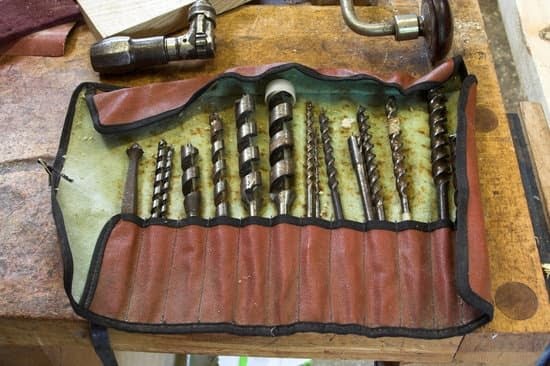Woodworking is a craft that requires precision, skill, and the right tools. A crucial aspect of any woodworking project is selecting the appropriate electric saws. With countless options available in the market, it can be overwhelming to determine which ones are essential for your woodworking needs. In this article, we will explore the various electric saws commonly used in woodworking and understand their functionalities and benefits.
Choosing the right electric saws for your woodworking projects is vital for achieving accurate and efficient results. Each type of saw has its own unique features and strengths that cater to specific woodworking tasks. By understanding the capabilities of different electric saws, you can make informed decisions when it comes to investing in the appropriate tools for your projects.
One of the most versatile powerhouses in woodworking is the circular saw. Circular saws offer flexibility and precision, making them a popular choice among woodworkers. They come in various types, each designed for specific uses such as rip cuts or crosscuts. In this article, we will delve into circular saws in detail and provide tips for choosing the perfect one for your woodworking needs.
Narrowing down which electric saws you need for woodworking can seem like a daunting task at first. However, by familiarizing yourself with the different options available and understanding their functionalities, you can confidently choose the essential tools that will help you bring your woodworking projects to life. Let’s dive into the world of electric saws for woodworking and discover which ones are best suited for your craft.
Circular Saws
Circular saws are a crucial tool in any woodworker’s arsenal due to their versatility and ability to make both straight cuts and bevel cuts. With their powerful motors and sharp, rotating blades, circular saws allow for efficient cutting through different types of wood.
Types of Circular Saws
There are several types of circular saws available on the market, each designed for specific purposes in woodworking projects. The most common type is the standard circular saw, also known as a sidewinder saw.
This type of circular saw has the motor positioned alongside the blade, making it compact and easy to handle. Another popular choice is the worm drive circular saw, which features a motor positioned at the rear of the tool, offering more torque for heavy-duty cutting tasks.
Choosing the Perfect Circular Saw
When selecting a circular saw for your woodworking needs, there are a few key factors to consider. Firstly, consider the size of the blade. Most circular saws have blades ranging from 7 ¼ inches to 10 inches in diameter. The larger the blade size, the deeper it can cut through thick lumber. Secondly, pay attention to the power of the motor. Higher horsepower motors will provide more cutting power and speed.
Tips for Using Circular Saws Effectively
To ensure optimal performance and safety while using a circular saw, there are some essential tips to keep in mind. Always wear appropriate protective gear such as safety glasses and gloves to prevent injuries from debris or contact with sharp blades. When making cuts, be sure to firmly hold onto both handles of the saw for better control and stability. Additionally, take precautionary measures such as clamping down your workpiece securely before cutting.
With its versatility and power, a circular saw is an indispensable tool that allows woodworkers to tackle a wide range of projects with precision and efficiency. Whether you are making long rip cuts or bevel cuts, a circular saw can help you achieve professional-quality results in your woodworking endeavors.
Jigsaws
A closer look at jigsaws and their ability to make intricate cuts in wood
When it comes to woodworking, precision is key, especially when you’re looking to create intricate or curved cuts. This is where jigsaws come into play. Jigsaws are versatile power tools that allow you to make highly detailed and precise cuts in wood. Their small, maneuverable blades and adjustable speed settings make them perfect for a variety of woodworking projects.
One of the main advantages of using a jigsaw is its ability to cut intricate shapes and curves with ease. Whether you’re creating a scrollwork design on a wooden plaque or shaping an arch on a piece of furniture, a jigsaw can give you the precision you need. The narrow blade of a jigsaw allows for tight turns and intricate detailing that would be difficult to achieve with other saws.
Discussing the different blade options and their impact on woodworking projects
Just like any other saw, the choice of blade plays a crucial role in the performance of a jigsaw and the final result of your woodworking project. There are various types of blades available for different cutting purposes, including wood-cutting blades, metal-cutting blades, laminate-cutting blades, and more.
For woodworking projects, it’s essential to choose the right type of blade for the specific requirements of your project. Wood-cutting blades typically have large teeth that are designed to quickly remove material while providing clean cuts. On the other hand, laminate-cutting blades have smaller teeth that minimize chipping and splintering when working with laminate materials.
Recommended uses of jigsaws in various woodworking scenarios
Jigsaws are incredibly versatile tools that can be used across a range of woodworking scenarios. Here are some recommended uses for jigsaws:
- Cutting out complex shapes: Whether it’s cutting out openings for electrical outlets or creating intricate designs on wood, a jigsaw is the perfect tool for making accurate cuts.
- Curved cuts: Jigsaws are excellent for cutting curves in wood, allowing you to create smooth and precise arcs or circular shapes.
- Fitting laminate flooring: With the right blade, a jigsaw can make straight, clean cuts through laminate flooring, ensuring a perfect fit.
- Trimming door frames: When installing new flooring or removing old carpeting, a jigsaw can be used to trim door frames for a seamless final look.
Overall, jigsaws are indispensable tools that can unleash your creativity and precision in woodworking projects. With their ability to make intricate cuts and versatility in various scenarios, they are a must-have addition to any woodworker’s toolbox.
Table Saws
When it comes to power and precision in woodworking, table saws are the go-to tool for many woodworkers. These stationary machines offer a level of accuracy that is hard to match with other electric saws. Table saws are known for their ability to make straight cuts through various types of wood, making them essential for projects that require precise dimensions.
One of the key features to consider when selecting a table saw for woodworking is the fence system. The fence acts as a guide, ensuring that your cuts are perfectly parallel to the edge of the workpiece. Look for a table saw with a sturdy and adjustable fence system that locks securely into place.
Another important feature is the miter gauge, which allows you to make angled cuts with ease. Make sure that the miter gauge on your chosen table saw is accurate and easy to adjust.
When operating a table saw, safety should always be a top priority. It is crucial to follow all safety guidelines provided by the manufacturer, including wearing proper protective equipment such as safety glasses and hearing protection. Additionally, it is recommended to use push sticks or push blocks when feeding smaller pieces of wood through the blade to avoid any accidents.
Reciprocating Saws
Reciprocating saws, also known as sawzalls, are powerful tools that can cut through wood with ease. They are designed with a back-and-forth motion of the blade, which allows for efficient and rapid cutting. Reciprocating saws are commonly used in woodworking projects that involve demolishing or removing large sections of wood, such as when cutting through studs or pruning branches.
One of the main advantages of reciprocating saws is their versatility. They can be equipped with different types of blades that are specifically designed for various applications. For example, coarse blades are ideal for rough cuts and demolitions, while fine-toothed blades are better suited for precision cuts. By simply swapping out the blade, reciprocating saws can be used for a wide range of woodworking tasks.
When using a reciprocating saw in woodworking, it is important to choose the right blade for the job. The type of wood being cut, as well as the desired thickness and finish, should all be taken into consideration. Some common types of reciprocating saw blades include:
- Wood-cutting blades: These blades typically have larger teeth with wider gullets to quickly remove material during rough cutting.
- Metal-cutting blades: These blades have finer teeth with smaller gullets to provide clean and smooth cuts in metal materials.
- Bi-metal blades: These versatile blades are designed to cut through both wood and metal materials effectively.
To ensure safe and efficient use of a reciprocating saw in woodworking projects, there are several tips and techniques to keep in mind. Firstly, it is important to properly secure the workpiece before making any cuts. This can be done by clamping it down or using a vice grip to prevent unexpected movement during cutting. It is also advised to wear personal protective equipment such as safety glasses and gloves to protect against any flying debris.
Miter Saws
Miter saws are an essential tool in any woodworking arsenal when it comes to achieving precise angled cuts. These versatile machines allow woodworkers to make accurate crosscuts and bevel cuts at various angles, making them ideal for projects that require precision and efficiency. Whether you’re working on picture frames, crown molding, or furniture, a miter saw can help you achieve the perfect angle every time.
There are different types of miter saws available on the market, each with its own unique features and capabilities. The basic types include compound miter saws, sliding compound miter saws, and dual compound miter saws.
Compound miter saws have a rotating blade that can tilt in only one direction, while sliding compound miter saws have a sliding mechanism that allows the blade to move back and forth along a rail, enabling larger cuts. Dual compound miter saws combine both tilting and sliding capabilities for even greater versatility.
When selecting a miter saw for your woodworking needs, there are several key factors to consider. Firstly, consider the size of the blade. Miter saw blades typically range from 8 inches to 12 inches in diameter, with larger blades allowing for longer and deeper cuts. Additionally, be sure to check the maximum cutting capacity of the miter saw to ensure it meets your project requirements.
To showcase the versatility of miter saws in woodworking projects, let’s take a look at a real-life example. Imagine you’re building a custom bookshelf with angled shelves. A miter saw would come in handy for making precise angle cuts on both ends of each shelf board. By setting the desired angle on the miter gauge of the saw and aligning the board against it, you can easily achieve consistently accurate cuts throughout your project.
Band Saws
Band saws are an essential tool in the world of woodworking, offering unique capabilities that can greatly enhance efficiency and precision. These versatile machines use a continuous band of toothed metal stretched between two or more wheels to cut through wood with incredible accuracy. Whether you are a professional woodworker or a DIY enthusiast, band saws can be a game changer in your woodworking projects.
There are different types of band saws available on the market, each with its own specific features and applications. The most common types include benchtop band saws, floor-standing band saws, and portable band saws. Benchtop band saws are compact and lightweight, making them suitable for smaller scale projects.
Floor-standing band saws offer more power and stability, making them ideal for larger and more complex woodworking tasks. Portable band saws, on the other hand, provide convenience and flexibility for professionals who need to take their tools to job sites.
The versatility of band saws lies in their ability to make intricate cuts such as curves, shapes, and irregular patterns in wood. This is particularly useful when crafting furniture pieces or creating decorative elements. Additionally, they can also be used for resawing – cutting boards into thinner pieces – effectively maximizing the use of lumber.
When using a band saw, it is important to choose the right blade for your project. There are different blade widths and teeth configurations available, each suited for specific cutting tasks. For example, blades with finer teeth are ideal for cutting curves while blades with coarser teeth work better for rougher cuts.
Handheld Circular Saws
Handheld circular saws are a popular choice among woodworkers who value mobility and convenience without compromising power. These compact tools offer portability, allowing woodworkers to bring the saw to the workpiece instead of the other way around. In this section, we will explore the advantages of handheld circular saws for woodworking on-the-go, discuss key features to consider when purchasing one, and share tips and tricks for maximizing their potential.
Advantages of Handheld Circular Saws
One of the main advantages of handheld circular saws is their portability. Unlike larger table saws or miter saws, handheld circular saws can be easily transported from one job site to another. This makes them ideal for carpenters or contractors who often work on different locations or need to move around within a project.
Despite their smaller size, handheld circular saws pack a punch in terms of power. These tools are equipped with motors that can range from 10 to 15 amps, allowing them to handle various cutting tasks with ease. They are capable of making long rip cuts, crosscuts, bevel cuts, and even plunge cuts when used correctly.
Another advantage is versatility. Handheld circular saws can cut through a variety of materials aside from wood, such as plastic or metal sheeting. This makes them useful not only for woodworking but also for general home improvement projects.
Key Features and Considerations
When purchasing a handheld circular saw, there are several key features that you should consider:
- Blade Size and Cutting Capacity: The blade size determines the maximum depth of cut that the saw can make. Common blade sizes range from 6 1/2 inches to 7 1/4 inches. Consider your cutting needs and choose a saw with an appropriate blade size.
- Motor Power: Look for a handheld circular saw with a motor that suits your project requirements. Higher amp motors provide more power and can handle tougher cutting tasks.
- Bevel Capacity and Adjustability: If you plan on making bevel cuts, consider a saw with a higher bevel capacity and an adjustable bevel feature for greater flexibility in angled cutting.
- Safety Features: Always prioritize safety when choosing any power tool. Look for handheld circular saws with features like blade guards, electric brakes, and anti-kickback systems to minimize the risk of accidents.
Tips and Tricks
To maximize the potential of handheld circular saws in woodworking:
- Use a straightedge or a guide rail for straight cuts to ensure accuracy.
- Secure your workpiece properly before making a cut to prevent movement or kickback.
- Consider using clamps or a circular saw guide system to increase stability and precision.
- Always wear appropriate personal protective equipment, such as safety glasses and ear protection.
By selecting the right handheld circular saw and utilizing these tips and tricks, woodworkers can unlock the full potential of these portable powerhouses and achieve professional results in their woodworking projects.
Conclusion
In conclusion, choosing the right electric saws for woodworking is crucial for a successful and efficient woodworking journey. Throughout this article, we have explored various types of electric saws commonly used in woodworking and their specific functionalities and benefits.
Circular saws are versatile powerhouses that offer a wide range of uses in woodworking projects. From making straight cuts to bevel cuts, these saws provide flexibility and precision. When selecting a circular saw, it is important to consider factors such as blade size, motor power, and additional features that suit your specific woodworking needs.
Jigsaws are essential for unleashing creativity in woodworking with their ability to make intricate cuts. Different blade options allow woodworkers to achieve different effects and deliver precision in their projects. Similarly, miter saws are perfect for achieving precise angled cuts, making them invaluable tools for efficiency and accuracy in woodworking.
Table saws offer both power and precision with their ability to handle heavy-duty tasks while maintaining accuracy. However, it is crucial to prioritize safety measures when operating these powerful machines. Reciprocating saws are known for their versatility in cutting through a variety of materials, including wood. They offer different blade types suitable for specific applications in woodworking.
Band saws provide unique capabilities and applications that can greatly enhance efficiency and precision in woodworking. Additionally, handheld circular saws offer portability without compromising on power, making them ideal for on-the-go projects.
Overall, the importance of selecting the right electrical saws cannot be overstated when it comes to embarking on a woodworking journey. By understanding the functionalities and benefits of each type of electric saw discussed in this article, readers can confidently choose the perfect tools that align with their specific needs.
So whether you’re an experienced woodworker or just starting out, remember to invest time in researching and choosing the right electric saws – they will undoubtedly play a significant role in your woodworking success. Now armed with knowledge about various electric saws, it’s time to explore further and start your woodworking projects with confidence. Happy woodworking.
Frequently Asked Questions
What kind of electric saw to cut wood?
When it comes to cutting wood, there are a few different types of electric saws that can do the job effectively. One common option is a circular saw, which features a spinning blade that can swiftly cut through various types of wood. Circular saws are versatile and can be adjusted to make different types of cuts such as rip cuts or crosscuts.
Another popular choice for cutting wood is a jigsaw, which allows for more intricate and curved cuts. Jigsaws have a smaller blade, allowing for more precision and maneuverability when working with wood.
What kind of saw is best for woodworking?
The best kind of saw for woodworking largely depends on the specific task at hand and personal preference. However, many woodworkers commonly turn to a table saw as their go-to tool in the workshop. Table saws offer exceptional versatility and power, providing precise straight cuts effortlessly using a rotating circular blade mounted on an arbor.
The table provides stable support for larger workpieces and often includes adjustable fences to ensure accuracy. Alongside table saws, other popular options include miter saws for angled cuts, band saws for curved cuts, and scroll saws for intricate designs.
What is the easiest electric saw to use?
If you’re looking for the easiest electric saw to use, one appealing option is a chainsaw with an electric motor instead of gas-powered engine models. Electric chainsaws are generally lighter in weight and easier to start compared to their gas counterparts since they don’t require the same manual effort during initial ignition.
These tools also don’t produce any exhaust fumes, making them more environmentally friendly and reducing potential health hazards caused by inhaling harmful gases. Additionally, electric chainsaws tend to have simpler maintenance requirements as there’s no need to mix fuel or change oil regularly – simply plug in and go!

Hi everyone! I’m a woodworker and blogger, and this is my woodworking blog. In my blog, I share tips and tricks for woodworkers of all skill levels, as well as project ideas that you can try yourself.





